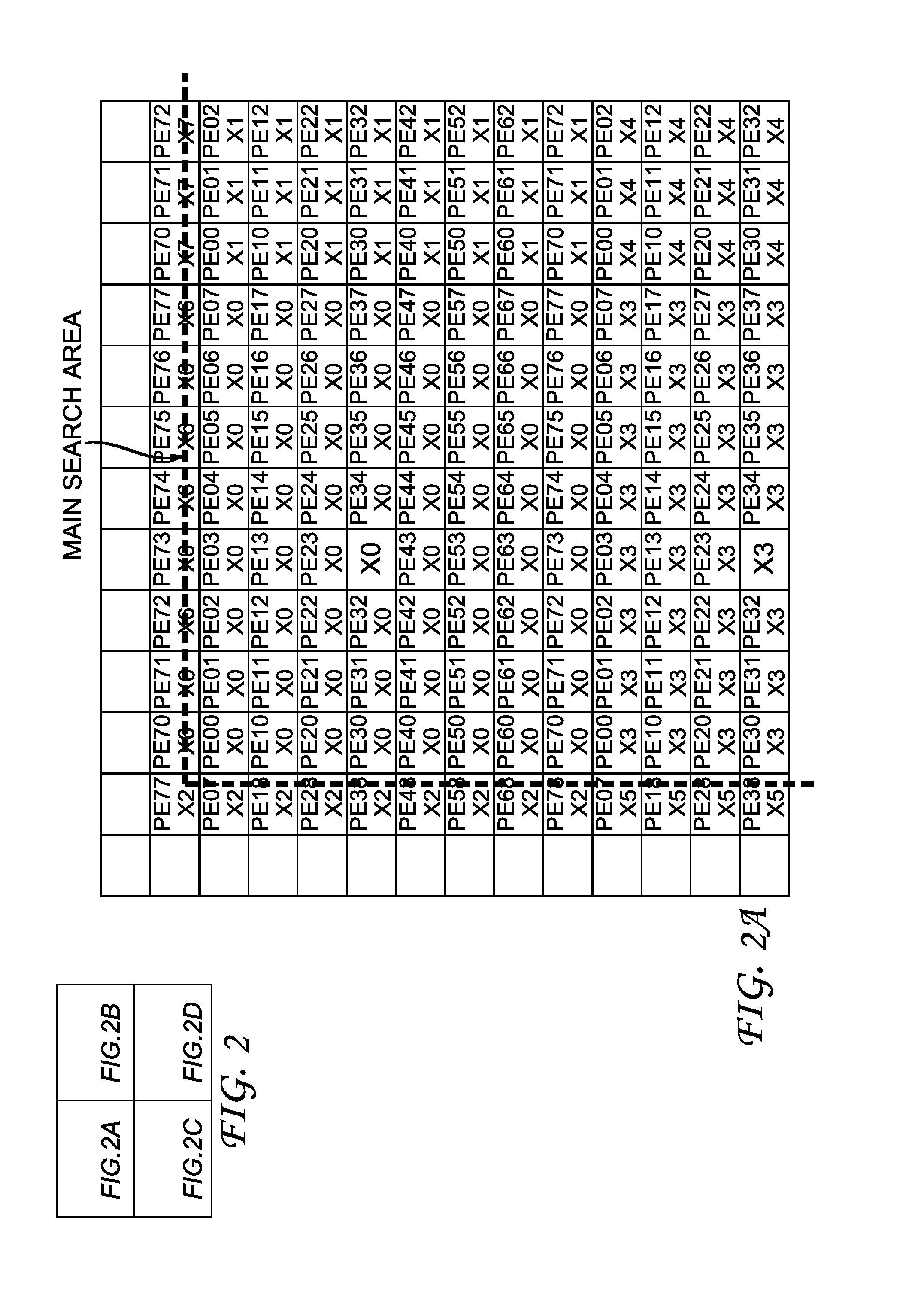Array of processing elements with local registers
a processing element and register technology, applied in image memory management, single instruction multiple data multiprocessors, instruments, etc., can solve the problems of limiting the maximum operating frequency, affecting the speed of copy operation, and disadvantageous for higher operating frequencies, so as to slow down the loading of pixels
- Summary
- Abstract
- Description
- Claims
- Application Information
AI Technical Summary
Benefits of technology
Problems solved by technology
Method used
Image
Examples
Embodiment Construction
[0025]For motion estimation, a best match position for a given block in a previous field / frame is searched. To achieve this, a given block has to be compared to many positions in a search area. To achieve the necessary processing speed, a parallel hardware with one PE per pixel is used. This may be implemented as a two-dimensional array or grid of PEs, as shown in FIG. 1. In this embodiment of the invention, each PE has nine special registers X0, . . . , X8, each of which holding a reference pixel value. E.g. one register X0 holds the corresponding pixel of the corresponding block of the reference image, three registers X1, X3, X4 hold corresponding pixels of neighboring blocks of the reference image that may be used for larger block sizes like 8×16, 16×8, 16×16, and five registers X2, X5, X6, X7, X8 are used to buffer pixels that are shifted in or out the 16×16 block X0-X1-X3-X4 as described below. The neighboring reference blocks are e.g. those that are referred to as east X1, sou...
PUM
 Login to View More
Login to View More Abstract
Description
Claims
Application Information
 Login to View More
Login to View More - R&D
- Intellectual Property
- Life Sciences
- Materials
- Tech Scout
- Unparalleled Data Quality
- Higher Quality Content
- 60% Fewer Hallucinations
Browse by: Latest US Patents, China's latest patents, Technical Efficacy Thesaurus, Application Domain, Technology Topic, Popular Technical Reports.
© 2025 PatSnap. All rights reserved.Legal|Privacy policy|Modern Slavery Act Transparency Statement|Sitemap|About US| Contact US: help@patsnap.com



